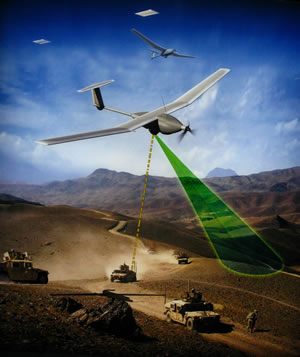
Lockheed Martin has developed a ruggedized, fuel-cell powered version of its Stalker Unmanned Air System (UAS), called the Stalker eXtreme Endurance (XE) UAS. The new version quadruples the original Stalker’s flight endurance to eight-plus hours, without impacting the mobility of the unmanned system or the flexibility of its payload capabilities.

The complete Stalker XE system includes two aircraft, fuel cells, command and control ground station, support equipment, and small propane fuel storage tank. The standard air vehicle sensor is a modular dual daylight and night-time imager that allows persistent surveillance during the visual/thermal transition from day to night.

The Stalker XE system is powered by Ultra Electronics’ pioneering hybrid energy source using a propane fuel cell with a small, conventional lithium polymer battery to handle power peaks. This long-endurance fuel cell technology was developed through an innovative Defense Advanced Research Projects Agency (DARPA) sponsored effort led by Lockheed Martin and Adaptive Materials Incorporated (now a division of Ultra Electronics Holdings, plc). The DARPA project culminated with a rigorous flight test program including numerous back-to-back, long endurance intelligence, surveillance and reconnaissance high altitude and high wind flights proving that the Stalker UAS met or exceeded all technical and performance milestones.
“Missions requiring real time eyes-on a situation for extended periods of time, like border patrol, pipeline surveillance and special operations can now be conducted by a small UAS versus a larger, more costly system,” explained Tom Koonce, Lockheed Martin’s Stalker program manager. ‘The convenience and lower cost of a small UAS combined with extended endurance is a true game-changer.”
















